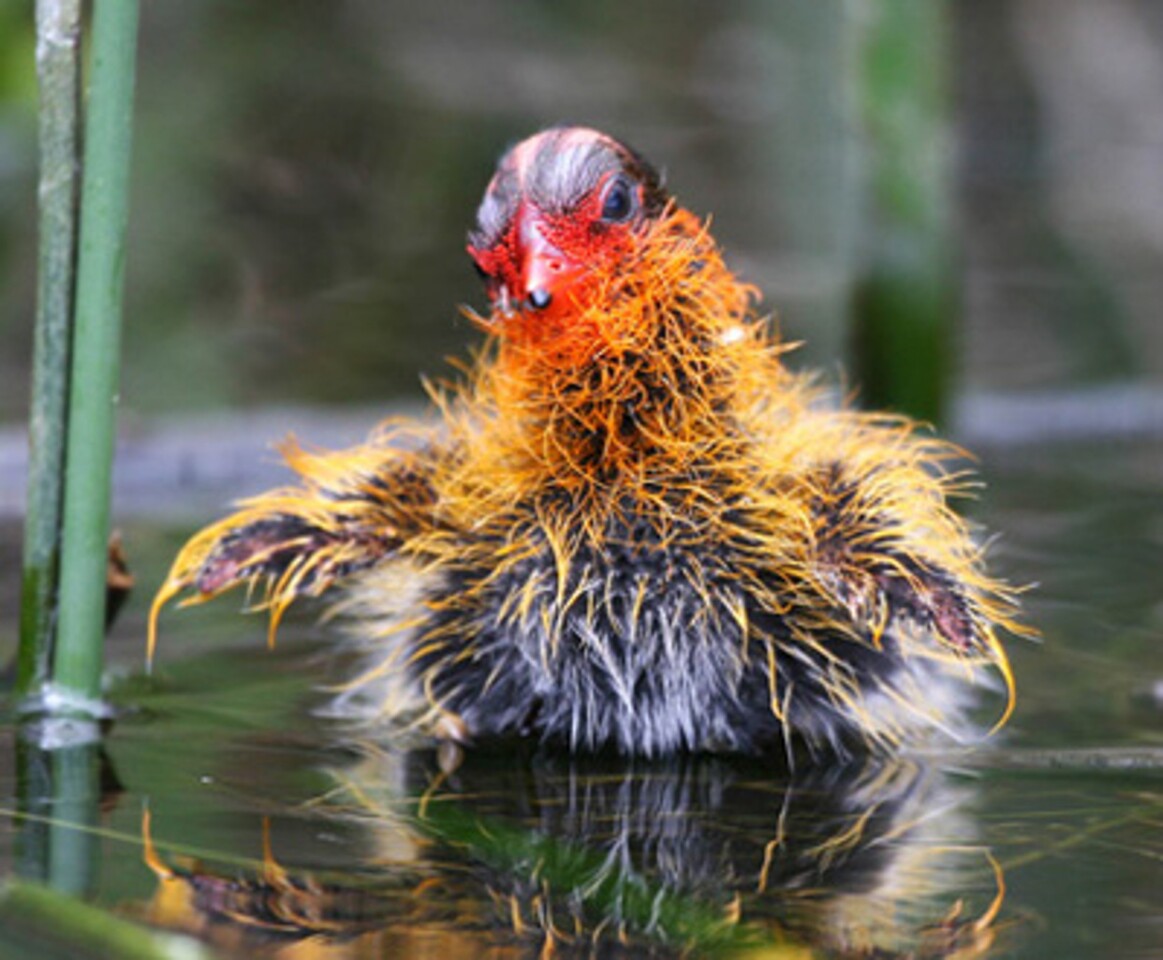With their bright orange and red feathers, North American coot chicks stick out like safety vests. A new study by the University of California Santa Cruz (UCSC) indicates that such coloration not only serves to get more food out of the parents, but is also a means of maximizing the bird's reproductive strategy.
With its gray and black feathers and white beak, the American coot isn't known as the most colorful of water birds. Even female ducks tend to stand out more in the scenery. But, in contrast, the coot's chicks are extremely colorful. In a world swarming with predators, this may seem like a bad evolutionary move, but research in recent years shows that there's a method to this bright orange madness.
According to UCSC, it was already known that the coot chicks use their bright colors to manipulate their parents into giving them preferential treatment over their siblings. However, the question remained as to why the mother and father go along with this color competition. What evolutionary function does it play?

"It’s an interesting question because there are theories about conflicts of interest between parents and offspring suggesting that it could be the chick manipulating the parents to get more food," says Bruce Lyon, professor of ecology and evolutionary biology at UCSC. "Having shown that the parents really care about the ornamentation, we focused in this study on the natural variation in chick coloring."
It turned out that there was even more to the puzzle, in that coots practice "brood parasitism." Like the cuckoo, the coot lays its eggs not only in its own nest but also in that of other coots. If the bright coloration was just a way of getting more parental attention, these intruder chicks should be a brighter color than the other chicks, but they are actually less colorful.
To find the answer, Lyon and Daizaburo Shizuka from the University of Nebraska–Lincoln collected about 1,500 coot eggs and hatched them indoors under controlled conditions. As the chicks grew, they were then scanned with a photospectrometer to precisely measure their coloration. In addition, the researchers noted each chick's coot family, its egg-laying and hatching order, and if it came from a parasite egg.
What they found was that the degree of coloring was controlled by the order in which the eggs were laid, with the later eggs producing brighter-tinted chicks. Since the chicks had no way to manipulate this, the change in color was likely due to the mother adding more carotenoid pigments to each subsequent egg in the nest.

The UCSC study suggests that this is because the coot's reproductive strategy involves laying a large number of small eggs. Because the food supply can't support so many, about half are expected to die of starvation. However, by laying a surplus of eggs, this increases the chances that the maximum number of chicks will survive related to the food supply.
This is where the chick coloration comes in. When the first chicks are born, the parents feed them indiscriminately. About 10 days after the last chick is born, however, the parents start paying more attention to the younger, more colorful ones. In this way, the larger, older chicks are neglected while the smaller ones get more of the food, allowing them to grow faster and catch up to their siblings or even surpass them.
It's also the reason why the parasitic chicks aren't very colorful. Since the mother is laying her eggs opportunistically, she can't know where in the laying order her chick will fall.
"The male and female divide up the brood, with each parent exclusively feeding their half of the brood, and each parent also picks a favorite," says Lyon. "Color predicts which one they choose, so the ornamentation may serve as a signal to tell them which chick needs the most help. They start by creating an uneven playing field, which allows them to cull the brood, and then they intervene to level the field. The orange plumage seems to be a feature that helps them do that."
A paper on the research was published in the journal Proceedings of the National Academy of Sciences.
Source: UCSC







